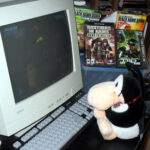To become an effective performer in the sport of racquetball, you must display athleticism, quickness, and accuracy. You also must have a sound strategy when playing this game, especially if you are playing doubles. If you are planning to join a friend in dominating a local doubles league soon, you must devise and implement innovative plans to optimize your abilities on the court, as doubles play provides you with fewer scoring opportunities than singles play. The following tips and strategies should prove to be very beneficial to you next time you step on the court for a doubles match in racquetball.
PARTNER SELECTION
Find a partner that plays with the opposite hand to you to prevent from being aced. Have your left-hander play on the left side of the court and the right-hander play on the right side, thus, allowing you and your partner to have both back corners of the court covered with your respective forehands. Returning a serve with a backhand shot is normally more difficult for racquetball players than with their forehand shots.
PLAYER ROLES
Avoid overcrowding the ball. Designate one person to play the front half of the court and one for the back half. If you designate areas, you will most likely have several instances where you and your partner end up in the same area of the court, thus, giving your opponents a golden opportunity to place the ball on the opposite side. For best results, have the slower partner play back and the quicker of the two play close to the front wall.
COMMUNICATION
Talk as you play and a consistent basis throughout the game. Communication with your partner is essential. Even when spreading yourself out, there may be some shots that end up in that mid-court area that can cause confusion. When doubles partners do not communicate on these types of balls, one of two things usually happens: the two partners will collide or the two partners both stare at each other as the ball bounces on the floor, as they both assumed the other partner was going to hit it.
SERVE POSITIONING
Position yourself on the opposite sides of the serving area when your partner is serving. Some doubles partners like to stand on the same side, but that leaves too much of a wide open space on the opposite side. If you and your partner stand right along the walls, you essentially screen those areas and prevent your opponents from hitting low kill shots along the side walls. By forcing your opponents to hit the ball more toward the middle of the court, you are setting your team up for good court position.
CALL HINDERS
Call a hinder when possible danger arises to avoid injury. It is very crowded with four players, so if you elect to take the shot rather than calling for a hinder when an opponent is directly in front of you, you will almost certainly nail that person in the back or head. Even if you miss hitting that person, you likely have altered your shot to avoid hitting him, thus, giving your opponents an easy return on a misplaced ball.


